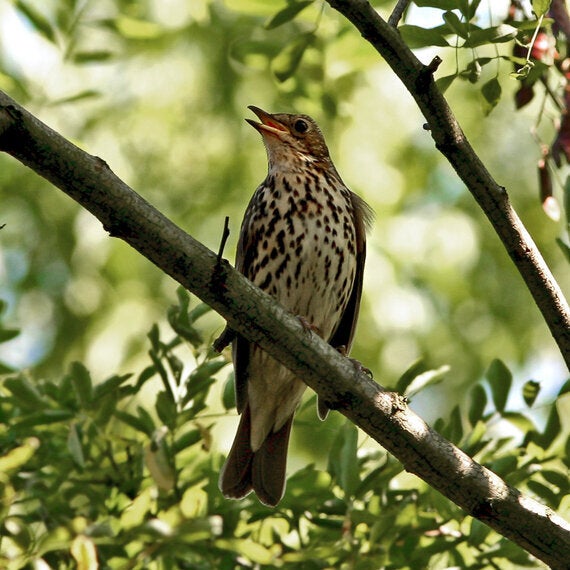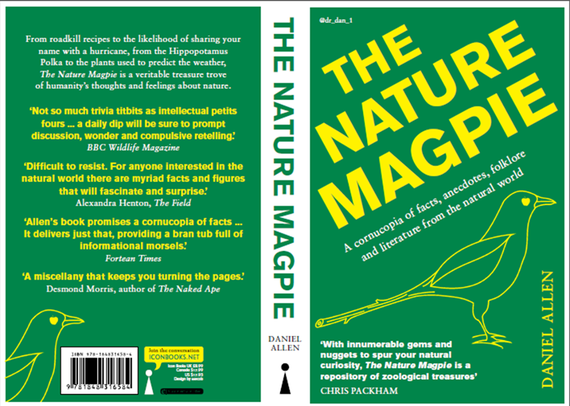
The first Sunday of May is International Dawn Chorus Day (ICDC). An event described by the Wildlife Trust as 'the worldwide celebration of Nature's daily miracle'.
Dawn is accompanied by thousands of individual birds advertising their whereabouts and protecting their territories. Together this avian choir awakens the new day with birdsong. The time of the chorus varies around the world, from around 4 a.m. in northern temperate areas, 6 a.m. in the tropics, and as late as 8 a.m. in the southern hemisphere. The ICDC urges people to 'meet up as dawn is breaking and enjoy the music as the sun rises'.

(By Taco Meeuwsen from Hellevoetsluis, The Netherlands (THRUSH TUNE Uploaded by Richard001) [CC-BY-2.0 (http://creativecommons.org/licenses/by/2.0)], via Wikimedia Commons)
Among the avian orchestra, the 'Cock-a-doodle-doo!' morning call of the cockerel, the clucks of hens, gobbles of turkeys, quacks of ducks, cooing doves, and cuckoo of cuckoos are easily distinguishable. Identifying individual bird songs is, however, extremely difficult to master, especially when the singer is out of sight. It requires practice, persistence and the constant willingness to listen. For the complete amateur, it is helpful to first familiarise yourself with bird songs.
Here are some useful tips from my latest book The Nature Magpie (Icon Books, 2014)
European birdwatchers may find the following devices helpful. Firstly, some phonetic renderings of bird songs:
Blue tit: 'tee-tee-tee, tit-tit-tit'
Chaffinch: 'cha-cha-cha, cha-cha-cha, cha-cha-cha'
Chiffchaff: 'chiff-chaff, chiff-chaff, chiff-chaff'
Great tit: 'tea-cher, tea-cher'
House sparrow: 'chiddik, chiddik'
Treecreeper: (high-pitched) 'tsee tsee'
Simple descriptions of the sounds can also be a good reference point, and there are various mnemonics that can be used to help remember the connections:
Blackbird: melodic laid-back flute sound ('beautiful blackbird')
Bullfinch: quiet, short, single peeping note ('peeping bullfinch')
Dunnock: even 'diddly-diddly' song ('diddly-diddly dunnock')
Green finch: machine-gun-like piping notes ('green beret finch')
Robin: thin, wistful fluting ('wistful robin')
Song thrush: similar to blackbird, higher-pitched and repetitive ('say it twice song thrush')
Wren: long, powerful trill in the middle ('ringing wren')

(copyright: Dr Daniel Allen)
And if the song you hear sounds like one of the following phrases, here's who it is:
Collared dove: 'I don't know. I don't know'
Reed bunting: 'one two ... one two ... one'
Wood pigeon: 'My toe IS bleeding. My toe IS bleeding'
Yellowhammer: 'A little bit of bread and no cheeeeeese'
If you have liked the sound of this article, you will enjoy The Nature Magpie: A Cornucopia of Facts, Anecdotes, Folklore and Literature from the Natural World

